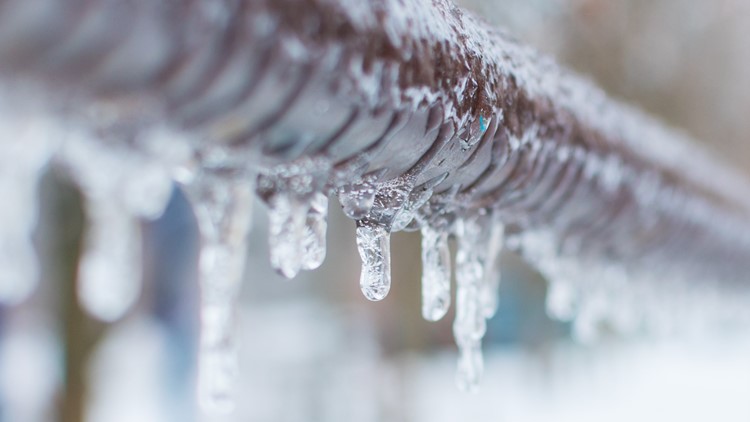How to Defend Pipes from Freezing: Expert Tips
How to Defend Pipes from Freezing: Expert Tips
Blog Article
We have stumbled upon the article on 6 Ways to Prevent Frozen Pipes listed below on the net and think it made perfect sense to relate it with you over here.

Winter can wreak havoc on your plumbing, specifically by freezing pipes. Below's how to prevent it from occurring and what to do if it does.
Intro
As temperatures decline, the threat of icy pipes boosts, possibly bring about costly repairs and water damages. Recognizing just how to avoid frozen pipelines is critical for property owners in cold environments.
Comprehending Icy Pipelines
What triggers pipelines to freeze?
Pipelines ice up when exposed to temperature levels listed below 32 ° F (0 ° C) for prolonged durations. As water inside the pipes freezes, it broadens, taxing the pipeline walls and possibly causing them to break.
Risks and problems
Icy pipes can result in water system disruptions, building damages, and pricey repairs. Ruptured pipes can flood homes and create considerable structural damage.
Indicators of Frozen Water Lines
Recognizing frozen pipelines early can prevent them from breaking.
How to identify icy pipelines
Look for lowered water flow from faucets, unusual smells or sounds from pipelines, and noticeable frost on subjected pipes.
Prevention Tips
Shielding vulnerable pipes
Cover pipelines in insulation sleeves or use warm tape to safeguard them from freezing temperature levels. Concentrate on pipes in unheated or external areas of the home.
Home heating methods
Maintain indoor areas effectively heated, specifically locations with pipes. Open up cupboard doors to permit warm air to flow around pipelines under sinks.
Protecting Outdoor Pipes
Yard tubes and outdoor faucets
Disconnect and drain yard hoses prior to wintertime. Install frost-proof spigots or cover outside taps with protected caps.
What to Do If Your Pipelines Freeze
Immediate activities to take
If you believe frozen pipes, maintain faucets open to soothe stress as the ice thaws. Utilize a hairdryer or towels soaked in warm water to thaw pipelines slowly.
Long-Term Solutions
Architectural changes
Take into consideration rerouting pipes away from outside walls or unheated locations. Add added insulation to attics, cellars, and crawl spaces.
Updating insulation
Buy top notch insulation for pipelines, attics, and walls. Proper insulation aids preserve constant temperature levels and minimizes the risk of icy pipes.
Verdict
Avoiding frozen pipes requires proactive measures and fast feedbacks. By recognizing the causes, signs, and safety nets, home owners can secure their plumbing throughout winter.
6 Proven Ways to Prevent Frozen Pipes and Protect Your Home
Disconnect and Drain Garden Hoses
Before winter arrives, start by disconnecting your garden hoses and draining any remaining water. Close the shut-off valves that supply outdoor hose bibs and leave the outdoor faucet open to allow any residual water to drain. For extra protection, consider using faucet covers throughout the colder months. It’s also important to drain water from any sprinkler supply lines following the manufacturer’s directions.
Insulate Exposed Pipes
Insulating your pipes is an effective way to prevent freezing. Pipe insulation is readily available at home improvement stores and is relatively inexpensive. Pay close attention to pipes in unheated areas such as the attic, basement, crawl spaces, or garage. Apply foam insulation generously to create a buffer against the cold. You can also wrap your pipes in heat tape or thermostat-controlled heat cables for added warmth.
Seal Air Leaks
Inspect your home for any cracks or openings that could let in cold air. Seal any holes around the piping in interior or exterior walls, as well as the sill plates where your home rests on its foundation. Additionally, make sure to keep your garage door closed unless you’re entering or exiting. Leaving it open creates a significant air leak that can lead to frozen pipes.
Allow Warm Air Circulation
During cold snaps, it’s essential to allow warm air to circulate evenly throughout your home. Leave interior doors ajar to promote better airflow. Open kitchen and bathroom cabinets to help distribute heat consistently around the rooms. If you have small children or pets, be sure to remove any household chemicals or potentially harmful cleaners from open cabinets for safety.
Let Faucets Drip
A small trickle of water can make a big difference in preventing ice formation inside your pipes. When temperatures drop significantly, start a drip of water from all faucets served by exposed pipes. This continuous flow helps prevent the water from freezing. Additionally, running a few faucets slightly can relieve pressure inside the pipes, reducing the chances of a rupture if the water inside does freeze.
https://choateshvac.com/6-proven-ways-to-prevent-frozen-pipes-and-protect-your-home/

Do you enjoy reading about How To Avoid Freezing Pipes? Put feedback down the page. We would be glad to hear your feelings about this piece. We hope that you visit us again soon. Are you aware of anybody else who is intrigued by How To Avoid Freezing Pipes? Be sure share it. Thank you for your time invested reading it.
Call Today Report this page